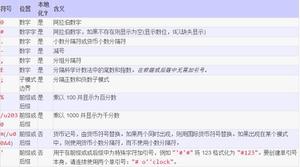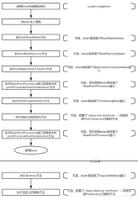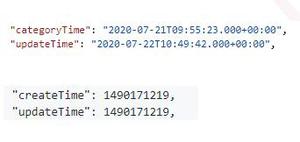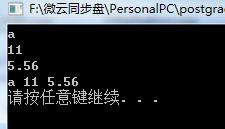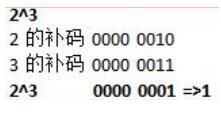java5 Condition用法--实现线程间的通信

Condition的功能类似在传统线程技术中的Object.wait()和Object.natify()的功能,传统线程技术实现的互斥只能一个线程单独干,不能说这个线程干完了通知另一个线程来干,Condition就是解决这个问题的,实现线程间的通信。比如CPU让小弟做事,小弟说我先歇着并通知大哥,大哥就开始做事。
Condition 将 Object 监视器方法(wait、notify 和 notifyAll)分解成截然不同的对象,以便通过将这些对象与任意 Lock 实现组合使用,为每个对象提供多个等待 set(wait-set)。其中,Lock 替代了 synchronized 方法和语句的使用,Condition 替代了 Object 监视器方法的使用。
Condition实例实质上被绑定到一个锁上。要为特定 Lock 实例获得 Condition 实例,请使用其 newCondition() 方法。
在java5中,一个锁可以有多个条件,每个条件上可以有多个线程等待,通过调用await()方法,可以让线程在该条件下等待。当调用signalAll()方法,又可以唤醒该条件下的等待的线程。
下面以银行存取款案例阐述Condition用法:
假设有一个账户,多个用户(线程)在同时操作这个账户,有的存款有的取款,存款随便存,取款有限制,不能透支,任何试图透支的操作都将等待里面有足够存款才执行操作。
package com.ljq.test.thread;import java.util.concurrent.ExecutorService;
import java.util.concurrent.Executors;
import java.util.concurrent.locks.Condition;
import java.util.concurrent.locks.Lock;
import java.util.concurrent.locks.ReentrantLock;
public class ConditionTest {
public static void main(String[] args) {
ConditionTest test = new ConditionTest();
// 创建并发访问的账户
Account myAccount = test.new Account("95599200901215522", 10000);
// 创建一个线程池
ExecutorService pool = Executors.newFixedThreadPool(2);
Thread t1 = test.new DrawThread("张三", myAccount, 11000);
Thread t2 = test.new SaveThread("李四", myAccount, 3600);
Thread t3 = test.new DrawThread("王五", myAccount, 2700);
Thread t4 = test.new SaveThread("老张", myAccount, 600);
Thread t5 = test.new DrawThread("老牛", myAccount, 1300);
Thread t6 = test.new SaveThread("胖子", myAccount, 2000);
// 执行各个线程
pool.execute(t1);
pool.execute(t2);
pool.execute(t3);
pool.execute(t4);
pool.execute(t5);
pool.execute(t6);
// 关闭线程池
pool.shutdown();
}
/**
* 存款线程类
*/
public class SaveThread extends Thread {
private String name; // 操作人
private Account account; // 账户
private int x; // 存款金额
SaveThread(String name, Account account, int x) {
this.name = name;
this.account = account;
this.x = x;
}
public void run() {
account.saving(x, name);
}
}
/**
* 取款线程类
*/
public class DrawThread extends Thread {
private String name; // 操作人
private Account account; // 账户
private int x; // 存款金额
DrawThread(String name, Account account, int x) {
this.name = name;
this.account = account;
this.x = x;
}
public void run() {
account.drawing(x, name);
}
}
/**
* 银行账户
*/
public class Account {
private String id; // 账号
private int cash; // 账户余额
private Lock lock = new ReentrantLock(); // 账户锁
private Condition _save = lock.newCondition(); // 存款条件
private Condition _draw = lock.newCondition(); // 取款条件
Account(String id, int cash) {
this.id = id;
this.cash = cash;
}
/**
* 存款
*
* @param x 操作金额
* @param name 操作人
*/
public void saving(int x, String name) {
lock.lock(); // 获取锁
if (x > 0) {
cash += x; // 存款
System.out.println(name + "存款" + x + ",当前余额为" + cash);
}
_draw.signalAll(); // 唤醒所有等待的取款线程。
lock.unlock(); // 释放锁
}
/**
* 取款
*
* @param x
* 操作金额
* @param name
* 操作人
*/
public void drawing(int x, String name) {
lock.lock(); // 获取锁
try {
if (cash - x < 0) {
System.out.println(name + "取款失败[余额不足],取款" + x + ",当前余额为" + cash);
_draw.await(); // 阻塞取款操作
} else {
cash -= x; // 取款
System.out.println(name + "取款" + x + ",当前余额为" + cash);
}
_save.signalAll(); // 唤醒所有等待的存款操作
} catch (InterruptedException e) {
e.printStackTrace();
} finally {
lock.unlock(); // 释放锁
}
}
}
}
以上是 java5 Condition用法--实现线程间的通信 的全部内容, 来源链接: utcz.com/z/392560.html



